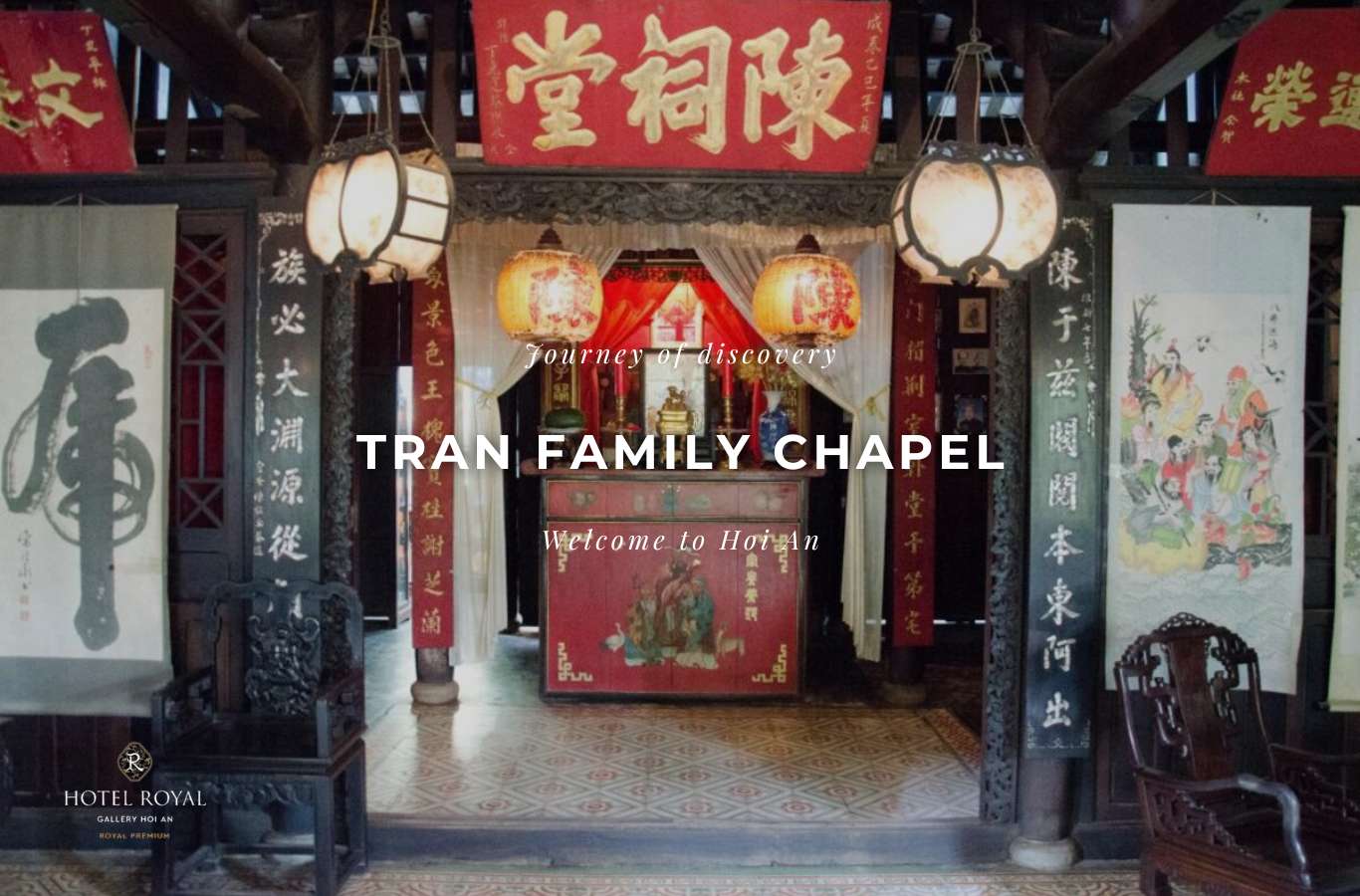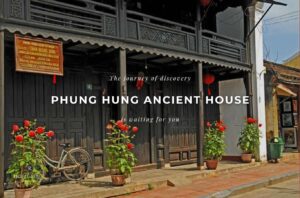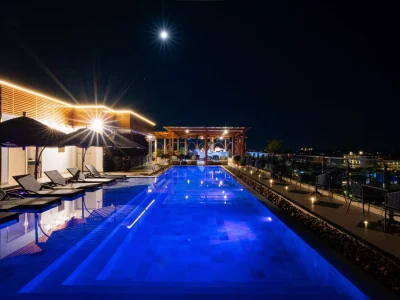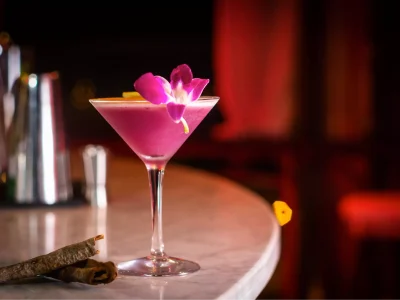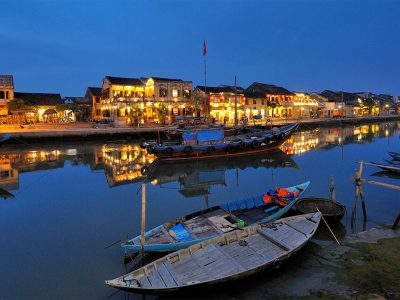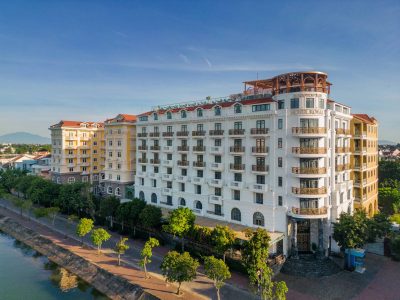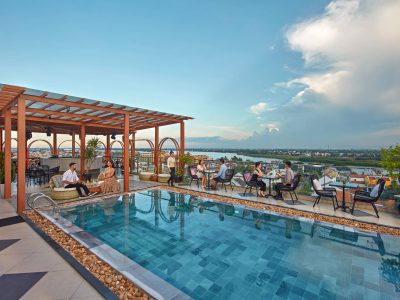Tran family chapel is a cultural gem in the heart of Hoi An ancient town, preserving unique architecture and 200 years of tradition. Discover its history, art, and enjoy a visit to the Tran family chapel with Hotel Royal Hoi An Gallery!
Table of Contents
ToggleOverview of Tran family chapel Hoi An
The Tran family chapel is one of the most historic architectural structures in Hoi An, reflecting the deep cultural and historical values of the Tran lineage. Below is an overview of this notable site:
- Location: The chapel is located at 21 Le Loi Street, Minh An Ward, Hoi An City, Quang Nam Province. Situated right in the ancient town area, it offers convenient access to nearby attractions such as the Japanese Covered Bridge, Tan Ky Ancient House, and the Fujian Assembly Hall.
- Opening hours: The chapel is open to visitors daily from 7:00 AM to 9:00 PM.
- Entrance fee: Visitors must purchase an ancient town entrance ticket to access the site. The fee is 80,000 VND per person for Vietnamese visitors and 150,000 VND per person for international visitors. Each ticket is valid for 24 hours and allows access to any 3 selected attractions within the Hoi An heritage site system.
- Visit duration: A typical visit to the Tran family chapel takes around 20 minutes, which is enough time to explore its unique architecture and learn about the history of the Tran family in Hoi An.
Read more: Hoi An Ancient Town: A Detailed Travel Guide
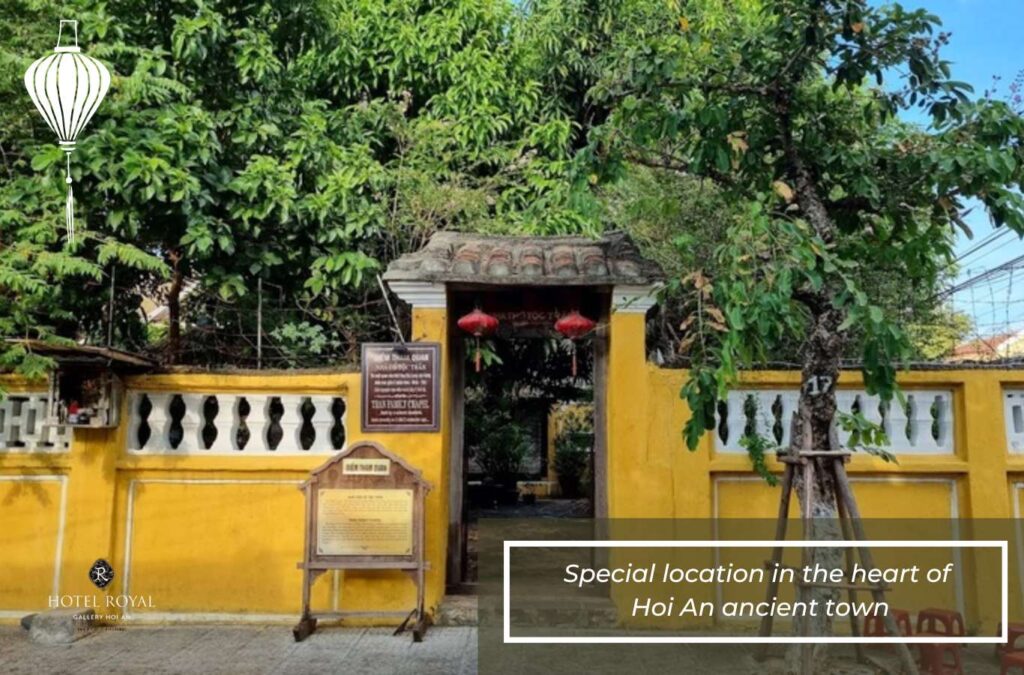
History of formation and development
The Tran family chapel was built in 1802 during the Nguyen Dynasty by Tran Tu Nham, a mandarin who wished to create a place for ancestral worship and strengthen family bonds. The structure features a blend of Vietnamese, Chinese, and Japanese architectural styles, reflecting the spirit of cultural fusion that characterized Hoi An at the time.
The chapel served as the spiritual and communal center of the Tran family, preserving sacred traditions while hosting ancestor worship ceremonies, family gatherings, and traditional educational activities.
Over more than 200 years, the chapel has undergone several restorations, yet it still retains much of its original architecture. Today, it functions as both a religious site and a cultural attraction, drawing visitors from across Vietnam and around the world.
Read more: Top 9 Famous Hoi An Museums: Locations, Ticket Prices, and Useful Tips
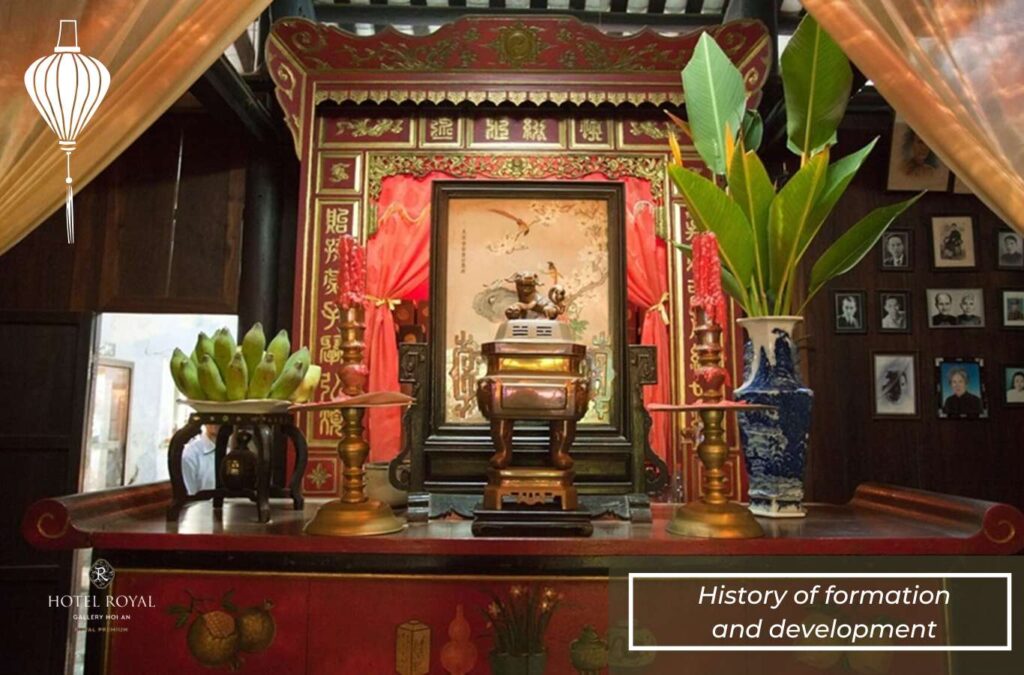
Architectural essence of cultural fusion in Tran family chapel Hoi An
The Tran family chapel is an architectural masterpiece that harmoniously blends Vietnamese, Chinese, and Japanese cultures, leaving a strong imprint of Hoi An’s ancient town charm.
Unique traditional garden house model
The Tran family chapel is designed in the style of a traditional garden house with an area of about 1500m² divided into multiple functional zones. The layout includes the main chapel, garden yard auxiliary buildings and family activity space. The front yard is spacious with an old starfruit tree providing shade and a peaceful atmosphere.
The main chapel is the center where the ancestral altar is placed with a yin yang tiled roof and finely carved beams and pillars. Auxiliary areas such as the guest house and meeting room are arranged logically providing comfort while retaining the ancient charm. The garden house model helps the chapel blend with nature creating a sense of peace.
Its uniqueness lies in the open space layout taking advantage of natural light and wind. Every corner of the chapel reflects harmony both solemn and intimate in line with the architectural spirit of Hoi An.
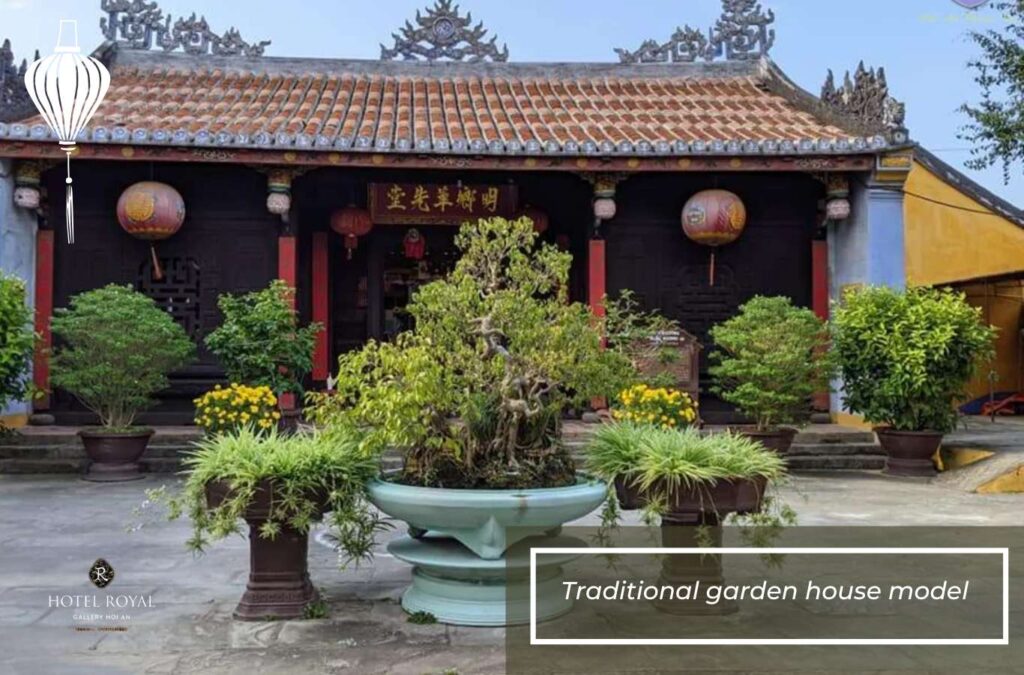
Feng shui symbols and architectural art
The architecture of the Tran family chapel is a refined fusion of Vietnamese, Chinese and Japanese influences. The yin yang tiled roof, characteristic of Chinese architecture, helps regulate temperature and symbolizes balance between yin and yang. The system of wooden beams and columns with intricate carvings reflects traditional Vietnamese style.
The round main entrance is inspired by Japanese architecture representing completeness and eternity. Feng shui elements such as the house’s orientation, the placement of the ancestral altar and the ancient starfruit tree are carefully arranged to bring luck and prosperity. Every element is in harmony creating a space that is both sacred and aesthetically pleasing.
Feng shui is also reflected in the garden layout with a small pond and lush greenery bringing positive energy. The chapel is not only a place of worship but also a work of art showcasing the craftsmanship of the past.
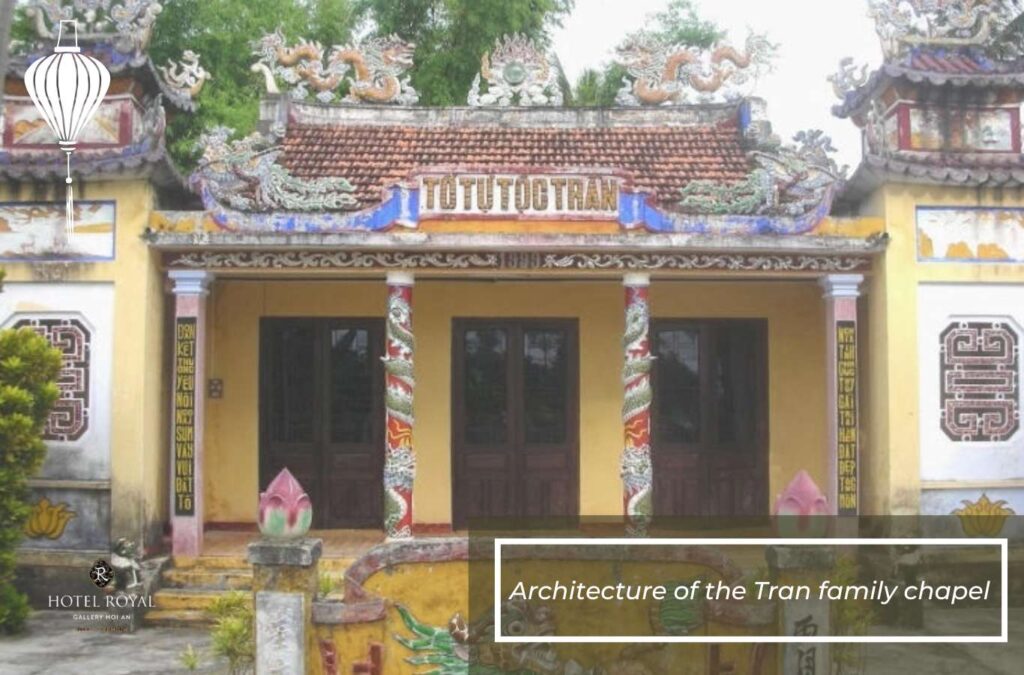
Unique artistic carving details
The system of horizontal boards and parallel scrolls in the chapel is delicately carved, inscribed with ancestral teachings. The altar, made of ebony wood and covered in red lacquer and gold leaf, serves as the sacred centerpiece, reflecting deep reverence. Lacquer paintings on the ceiling depict scenes of traditional daily life and hold significant artistic value.
The round main door, adorned with carved patterns, is a unique highlight reminiscent of Japanese Zen architecture. The wooden ceiling, assembled from small pieces to form intricate patterns, showcases the craftsmanship of Hoi An artisans. Every detail carries profound cultural and historical meaning.
The ancient starfruit tree in front of the yard is considered the soul of the chapel. With a lifespan of hundreds of years, it symbolizes longevity and family unity. Together with the architectural details, the starfruit tree makes the Tran family chapel an irreplaceable symbol of the ancient town.
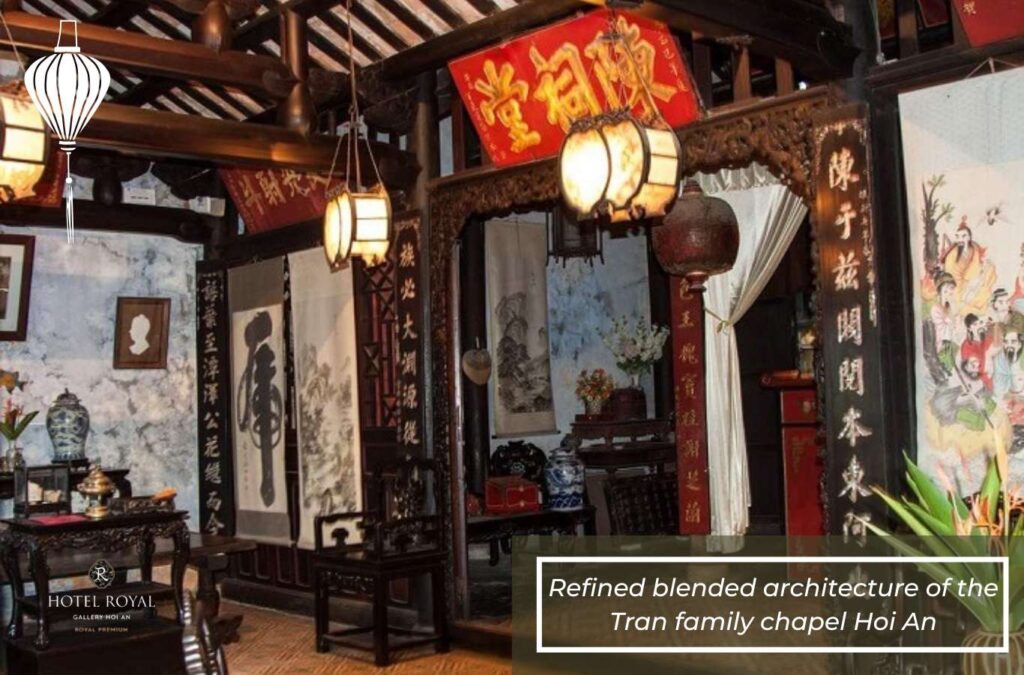
Cultural and spiritual values of the Tran family over time
The Tran family chapel is not only an architectural structure but also a place that preserves the cultural, spiritual, and historical values of the Tran lineage.
Place to honor ancestors and preserve traditions
The Tran family chapel is a spiritual center where descendants of the Tran lineage honor their ancestors through important rituals. Ceremonies such as ancestral death anniversaries, Lunar New Year celebrations, and family gatherings are held solemnly, helping to preserve a sense of unity. These rituals not only carry spiritual meaning but also teach younger generations about gratitude toward their roots.
The role of the chapel goes beyond worship. It serves as a place of connection for the Tran community in Hoi An and beyond. Stories of the ancestors, from Tran Tu Nham to later generations, are passed down, nurturing a strong sense of family pride. The chapel is like a flame that keeps the tradition alive.
Visitors come not only to admire the architecture but also to feel the sacred atmosphere and the enduring spirit of family culture. The Tran family chapel stands as a living testament to the value of tradition in modern society.

Preservation of antiques and valuable heritage
The Tran family chapel preserves many valuable antiques, including horizontal boards, parallel scrolls, and worship items made of ebony wood and bronze. These artifacts, dating back hundreds of years, hold significant historical and artistic value. Each item tells a story about the Tran lineage and the prosperous period of Hoi An.
Lacquer paintings, ancient incense burners, and family genealogy books are carefully preserved, serving as precious historical records of the Tran family. Preservation efforts are carried out seriously by descendants, with support from Hoi An authorities. These relics make the chapel a “living museum” of the ancient town.
The meaning of these artifacts lies not only in their material value but also in their spiritual significance. They serve as a bridge between the past and the present, helping both visitors and descendants better understand the culture and history of Hoi An.

Tran family chapel – Historical symbol of Hoi town
In the history of Hoi An, the Tran family chapel once served as an educational center where descendants learned about etiquette, history, and literacy. This role helped the chapel become a cultural symbol that contributed to shaping the ancient town’s community. It was also the venue for important social events within the family.
With its unique architecture and historical value, the Tran family chapel stands as a cultural highlight of Hoi An, alongside landmarks like the Japanese Covered Bridge and the Fujian Assembly Hall. It attracts international visitors and helps promote the image of the ancient town to the world. The chapel is a testament to the enduring legacy of Vietnamese cultural heritage.
Today, the chapel is not only a source of pride for the Tran family but also for the people of Hoi An. It represents the spirit of preservation and the promotion of tradition, enriching the identity of the ancient town.

Some notes when visiting Tran family chapel
When visiting the Tran family chapel in Hoi An, you should keep the following points in mind to ensure a respectful and fulfilling cultural experience:
- Opening hours: From 7:00 AM to 9:00 PM daily.
- Entrance fee: The Tran family chapel is one of the attractions included in the Hoi An ancient town entrance ticket package. The fee is 80,000 VND per person for Vietnamese visitors and 150,000 VND per person for international visitors. This ticket allows entry to 4 out of 21 heritage sites in Hoi An and is valid for the day of purchase.
- Best time to visit: Morning is the ideal time, when natural light highlights the ancient architecture and the weather is cooler.
- Suggested duration: Spend around 30 to 45 minutes to explore the entire chapel complex.
- Photography: Photography is allowed, but avoid using flash to help preserve the antiques.
- Conduct: Keep quiet, do not touch the artifacts, and follow the guidance of the site management.
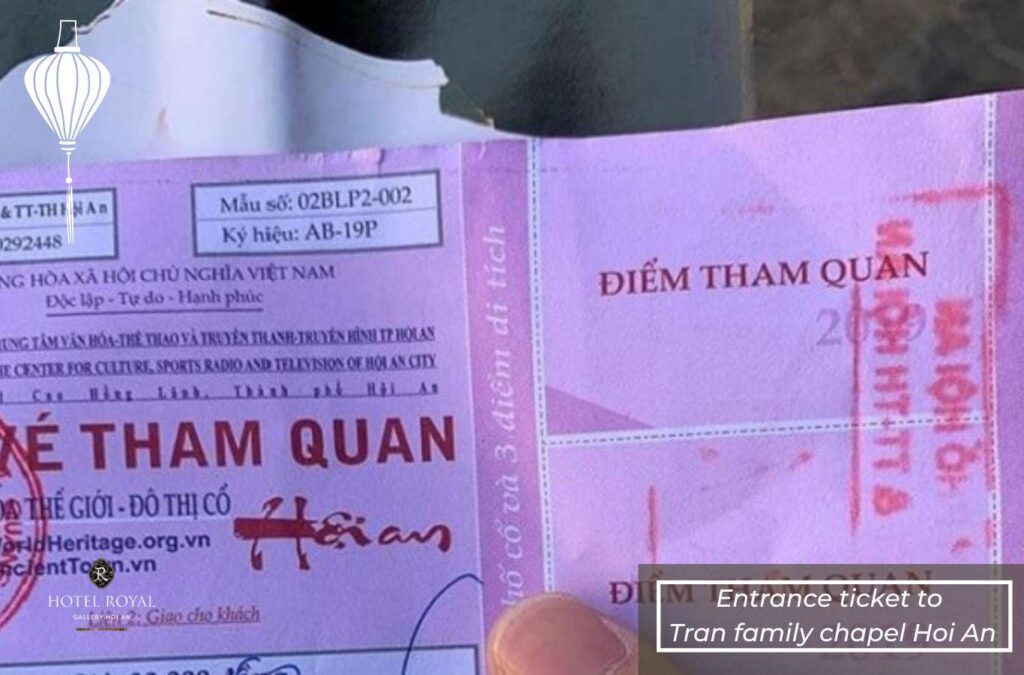
Nearby places to Tran family chapel
Below is a list of notable attractions near the Tran family chapel, making it easy to include them in your journey to explore Hoi An:
- Japanese Covered Bridge (Chua Cau), about 200 meters away: A historic bridge with strong Japanese architectural influence, built in the 17th century. It is a cultural symbol of Hoi An and a must-visit photo spot.
- Fujian Assembly Hall, about 300 meters away: Built in 1697, this hall is dedicated to the worship of Thien Hau, the sea goddess, and other guardian deities. Its unique Chinese architecture and historical value make it a popular destination.
- Hoi An Market, about 400 meters away: A bustling traditional market where you can enjoy local specialties, shop for souvenirs, and experience the vibrant atmosphere of the old town.
- Hoi An Museum of Folk Culture about 500 meters away: Located at 33 Nguyen Thai Hoc Street, this museum displays over 480 artifacts showcasing the daily life, customs, and traditional crafts of Hoi An residents.
- Thanh Ha Pottery Village about 3 kilometers away: A traditional craft village with over 500 years of history, known for its handmade pottery. Visitors can watch the pottery-making process and try creating their own pieces.
- Tra Que Vegetable Village about 3 kilometers away: A famous village known for traditional organic farming methods. Tourists can experience being a farmer and participate in planting and harvesting vegetables.
Read more:
- Explore Japanese Bridge in hoi an, a unique architectural heritage.
- Tra Que Vegetable Village: Discover the Rustic Beauty in The Heart of Hoi An
- Tan Ky ancient house Hoi An-200 year old heritage in the heart of the old town
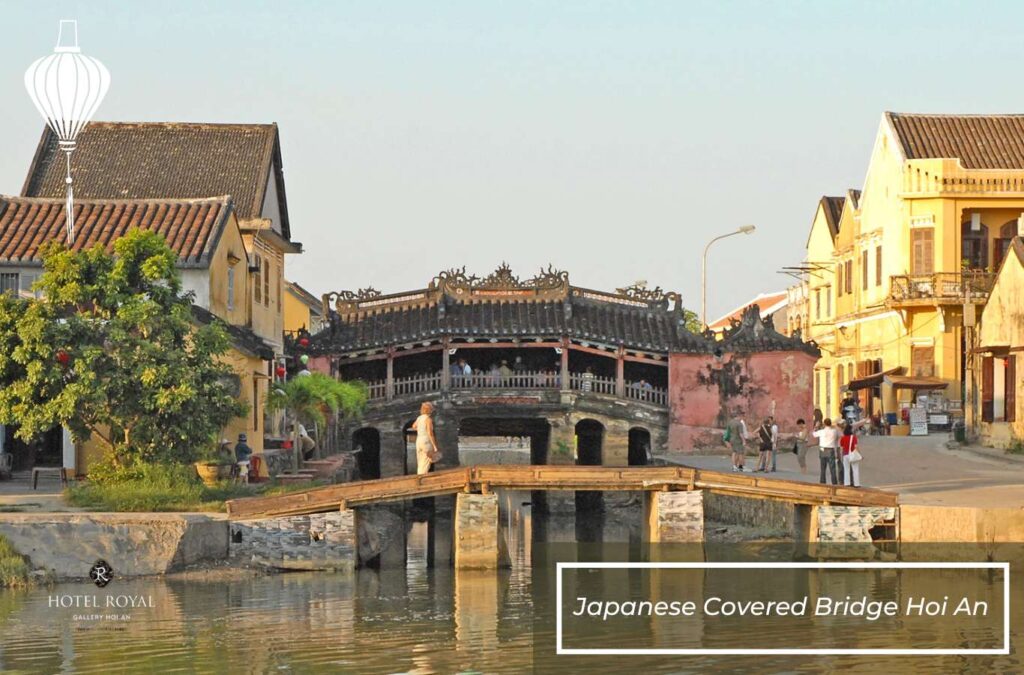
Accommodation suggestion at Hotel Royal Hoi An Gallery
After strolling through the traditional architecture and exploring the historical values of the Tran family chapel, visitors can continue their Hoi An journey with a luxurious and comfortable stay right in the heart of the ancient town. Hotel Royal Hoi An Gallery is the perfect suggestion for those seeking a refined retreat that remains close to local cultural heritage.
The hotel features two distinctive wings. The Sotaro wing is inspired by Japanese culture, with dark wood tones, lanterns, and minimalist interiors. The Wakaku wing impresses with soft lines and floral motifs characteristic of Art Nouveau style.
Hotel Royal Hoi An Gallery offers an ideal stay with a rooftop infinity pool, fine dining restaurant, relaxing spa area, and a team of professional staff ready to provide exceptional service.
Read more: Top 10 best 5 star hotels in Hoi An with stunning views, luxurious amenities
Featuring plush and comfortable bedding, Deluxe rooms overlook the local town precinct of Hoi An
alongside a variety of quality amenities. (Limited views available from Wakaku Deluxe Rooms)
- 30 - 34 sqm
- 3 Adults
The Tran family chapel is a cultural symbol of Hoi An ancient town, preserving centuries of history, blended architecture, and the spiritual values of the Tran lineage. From the yin yang tiled roof and ancient starfruit tree to precious artifacts, the chapel serves as a bridge between the past and the present.
To make your journey even more complete, choose to stay at Hotel Royal Hoi An Gallery, where luxury, high class service, and artistic ambiance await you right in the heart of the heritage town.
Read more:


